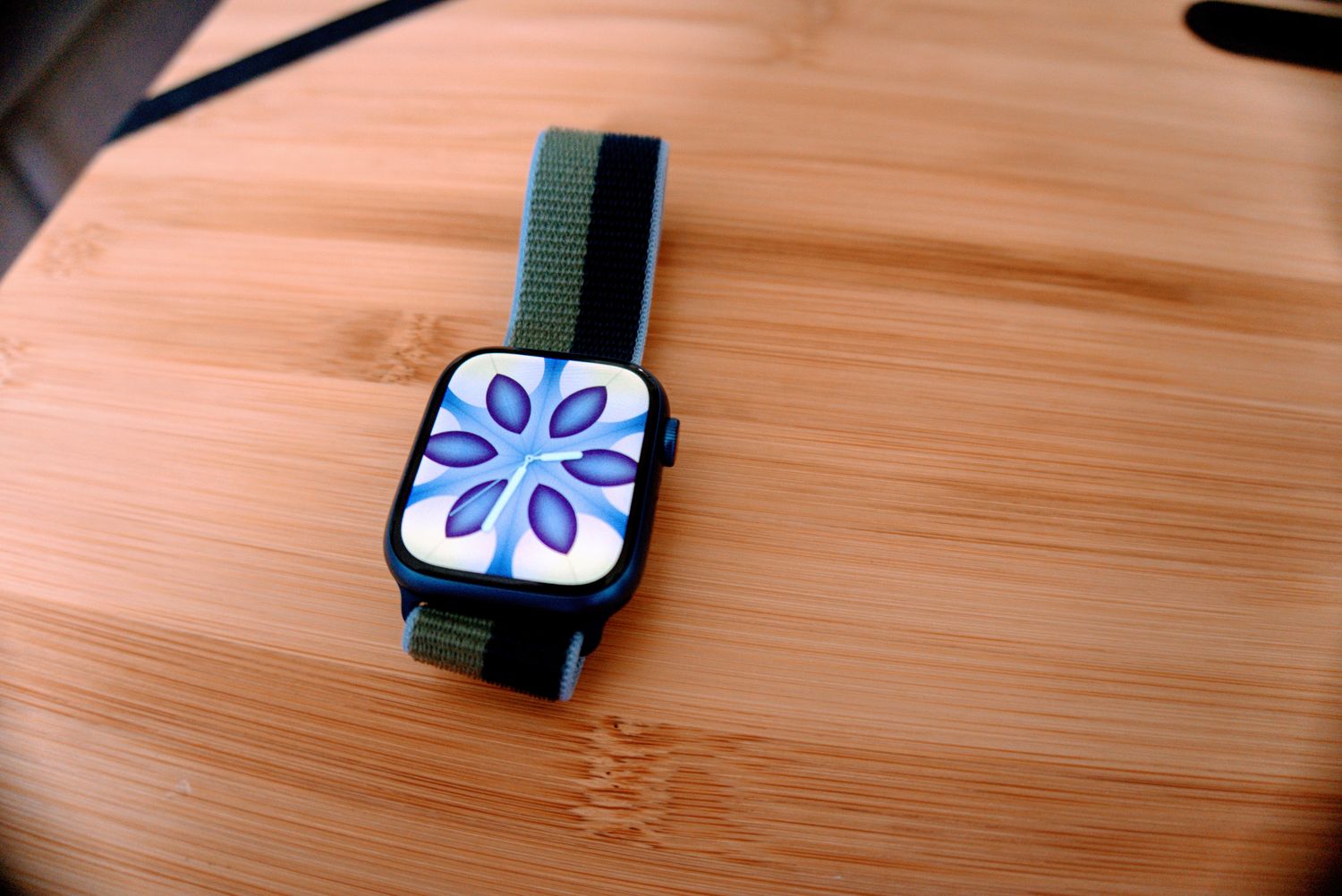The Apple Watch Series 7 started shipping to most customers today — at least for those who pre-ordered — but I got my hands on the 45mm blue model early yesterday. At this point, I’ve spent 24 hours with the Series 7, updated to the latest Watch OS 8.0.1, and wore it overnight for sleep tracking. I also spent some time comparing it to my Apple Watch Series 6. Here are my initial impressions.
Size does matter
The Apple Watch Series 7 may have gotten a bit less attention than the fancy new camera capabilities of the iPhone 13 series, but that doesn’t mean there aren’t significant changes and improvements here. The biggest and most visibly apparent one is the 20% bigger screen, with its smooth curved glass that pours over the edge.
Don’t let anyone tell you otherwise — the bigger screen size makes a difference. Text is bigger and more legible, complications feel less cramped, and the thinner bezels make it feel like a sleeker, better-looking device overall. I got the largest size of both models — 44mm for the Series 6 and 45mm for the Series 7 — so the size difference was even more apparent. The overall experience of scrolling through apps and checking stats was more pleasant, especially on the denser, more info-packed watch faces.
One important note if you get the blue Series 7 as I did: The color is lighter than the darker navy blue on the Series 6, so I’m finding it a bit harder to match to my outfits. If you’d prefer the more flexible and conservative option, you may want midnight, which replaces last year’s space gray. The opposite goes for the red Series 7, which is a deeper red than before. You should consider your options and outfits accordingly before picking one.
If you already have a Series 6, it’s probably not worth the upgrade
While I’m all praise for the Series 7 screen, I can’t recommend the upgrade if you’re already a Series 6 owner. The bigger screen is an excellent quality-of-life improvement, but the guts of the two smartwatches are more or less identical. You still have the S6 processor, all the sensors are the same, and both can run the latest versions of WatchOS 8, so you can take advantage of all the new features. These include Portrait photos on the home screen, new watch faces, improved sleep tracking, smart device control, mindfulness, and more.
The only place where you might notice another difference between the Series 6 and Series 7 is charging time. The new charger that comes with the Series 7 supports a USB-C input, can connect to a higher-wattage power brick, and charges 33% faster. It’s too early to comment on battery life, but I’m currently at 40% of juice after topping up to full upon initial setup with the always-on display. I expect most people will get a full day of use out of the Series 7, but probably not much more than that.
If you have a Series 4 and older, this will be a game changer
The calculus changes for most people — and me — once you start getting to the Apple Watch Series 4 and older. Everything I said about the screen size disparity gets amped up tenfold when putting the Series 7 and older models side by side. One of our writers dove into the many reasons you shouldn’t get an Apple Watch Series 3 anymore. If you’re keen on not spending the extra cash for the Series 7, the Apple Watch SE has a better design and more reliable software support than the Series 3.
The functionality gap is still huge
One of the biggest things that struck me after switching from the Samsung Galaxy Watch 4 to the Apple Watch Series 7 is how big the gap between WatchOS and Wear OS still is, despite the best attempts of Google and Samsung to rectify it. WatchOS is a uniform ecosystem that largely works the way it’s meant to: Delivering notifications, connecting to first and third-party apps, and just generally acting as a coherent experience. This is something that the Samsung-flavored Wear OS 4 hasn’t managed, considering notifications are often more miss than hit and apps just don’t interact well with each other.












